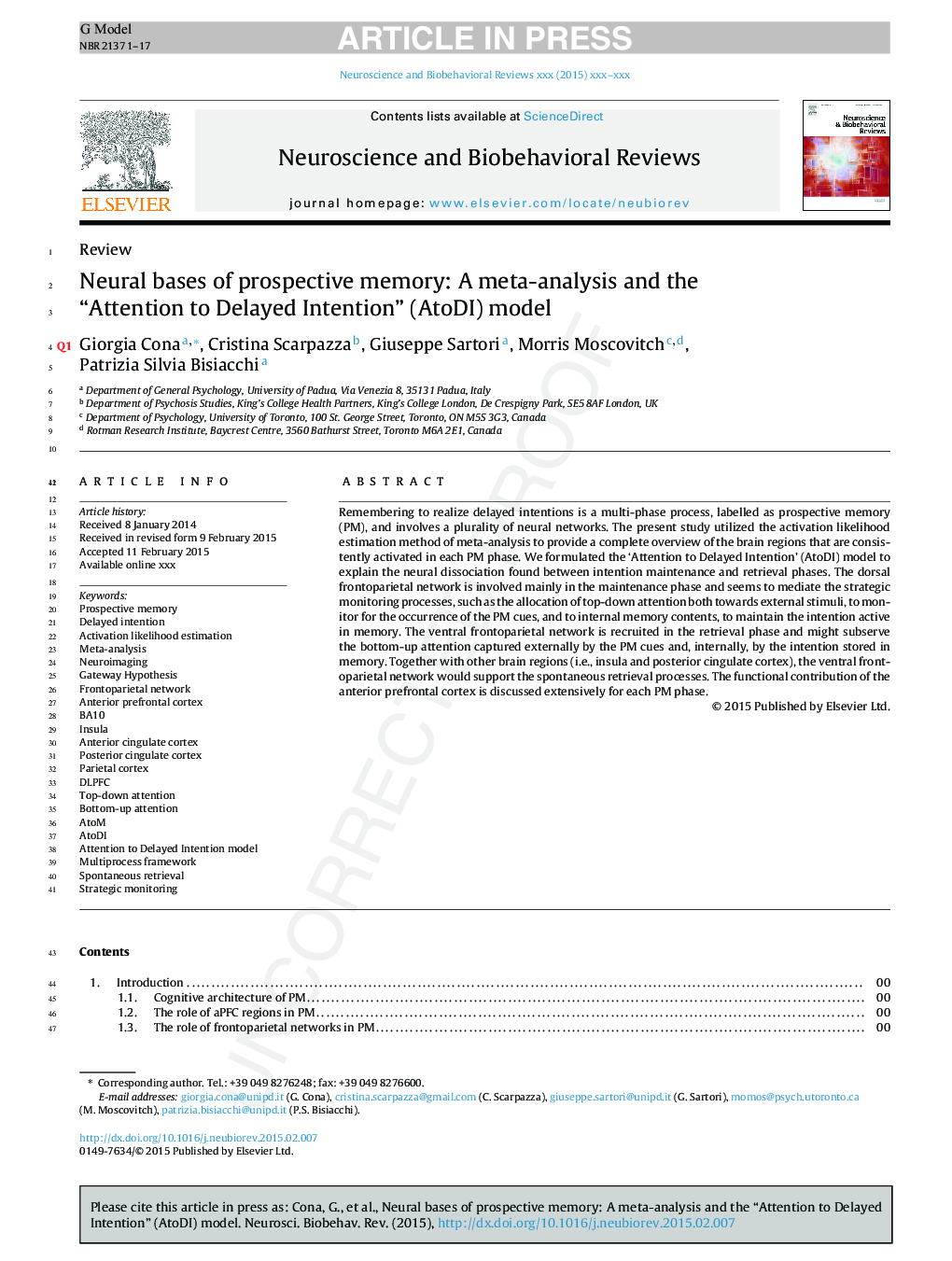| Article ID | Journal | Published Year | Pages | File Type |
|---|---|---|---|---|
| 7303484 | Neuroscience & Biobehavioral Reviews | 2015 | 17 Pages |
Abstract
Remembering to realize delayed intentions is a multi-phase process, labelled as prospective memory (PM), and involves a plurality of neural networks. The present study utilized the activation likelihood estimation method of meta-analysis to provide a complete overview of the brain regions that are consistently activated in each PM phase. We formulated the 'Attention to Delayed Intention' (AtoDI) model to explain the neural dissociation found between intention maintenance and retrieval phases. The dorsal frontoparietal network is involved mainly in the maintenance phase and seems to mediate the strategic monitoring processes, such as the allocation of top-down attention both towards external stimuli, to monitor for the occurrence of the PM cues, and to internal memory contents, to maintain the intention active in memory. The ventral frontoparietal network is recruited in the retrieval phase and might subserve the bottom-up attention captured externally by the PM cues and, internally, by the intention stored in memory. Together with other brain regions (i.e., insula and posterior cingulate cortex), the ventral frontoparietal network would support the spontaneous retrieval processes. The functional contribution of the anterior prefrontal cortex is discussed extensively for each PM phase.
Keywords
Related Topics
Life Sciences
Neuroscience
Behavioral Neuroscience
Authors
Giorgia Cona, Cristina Scarpazza, Giuseppe Sartori, Morris Moscovitch, Patrizia Silvia Bisiacchi,
